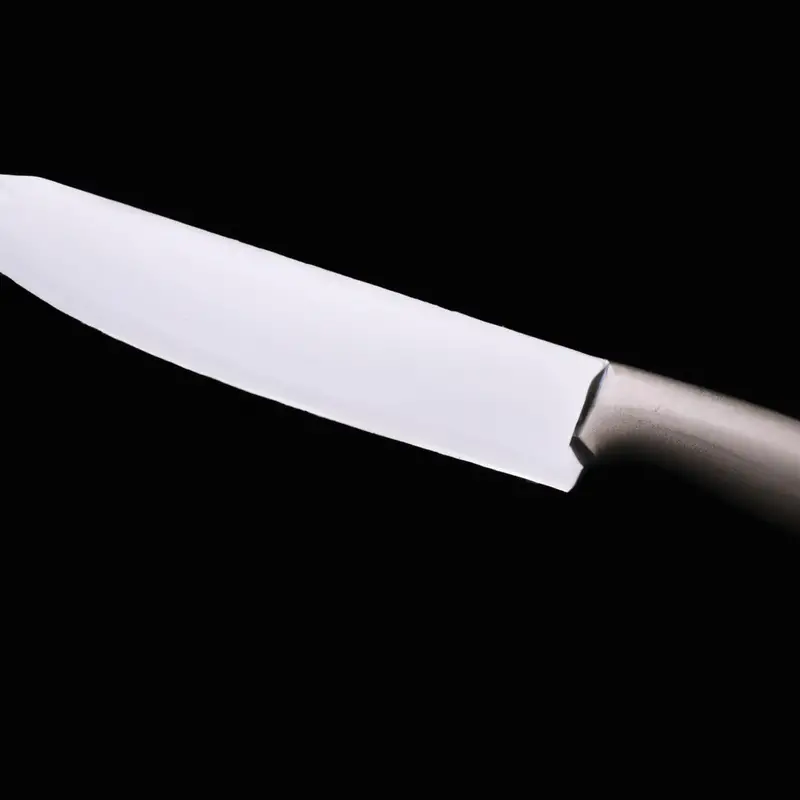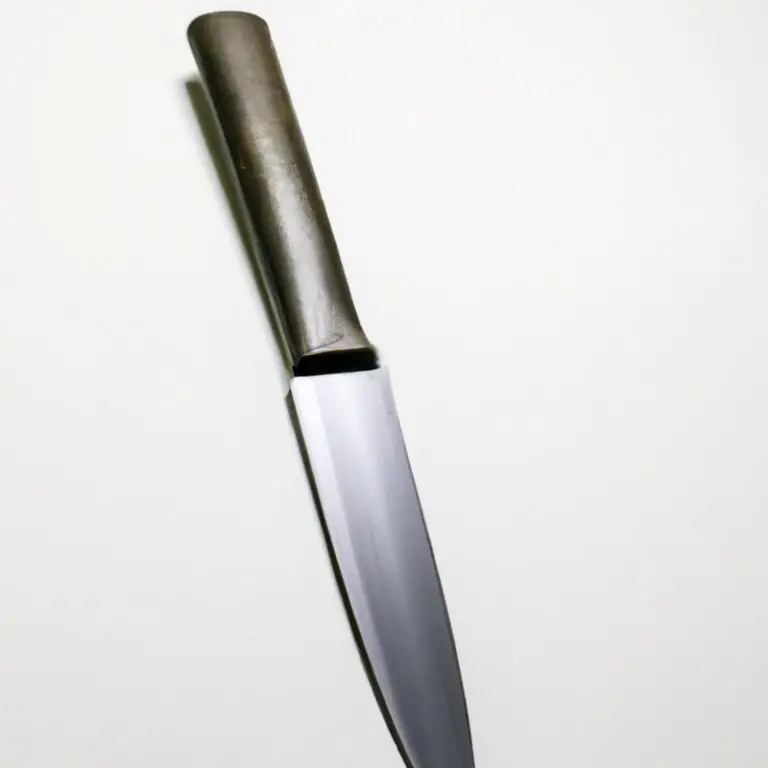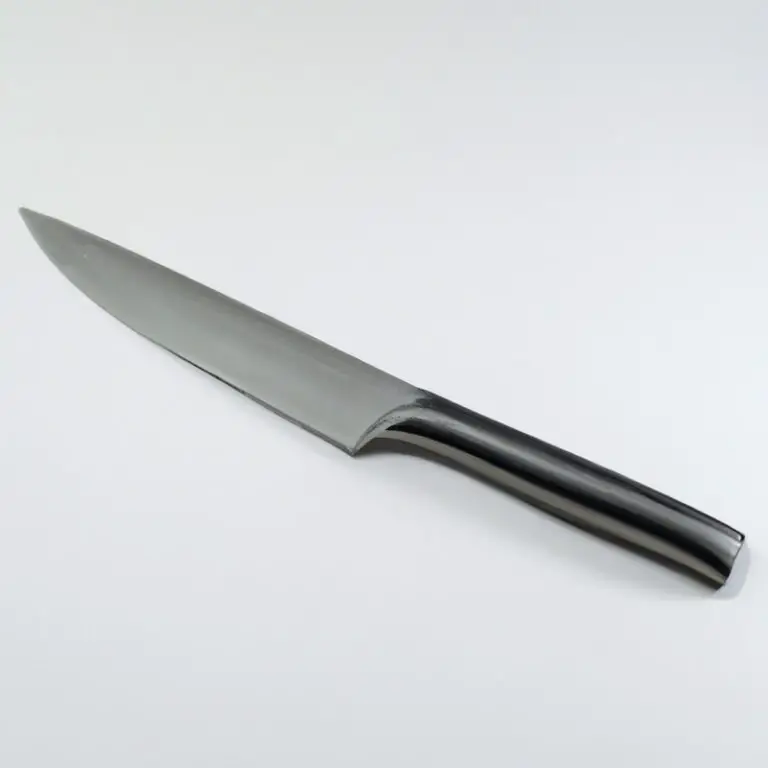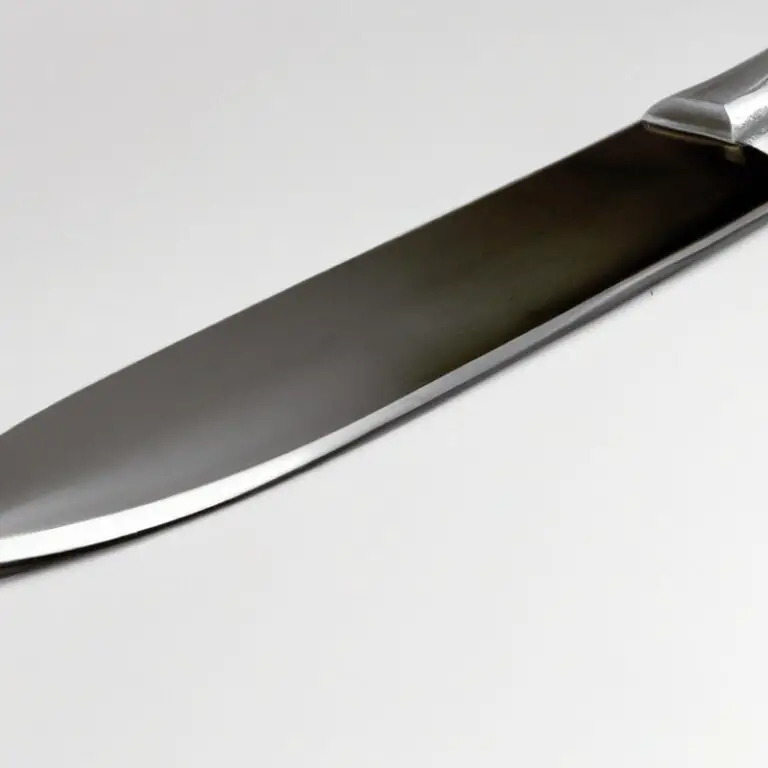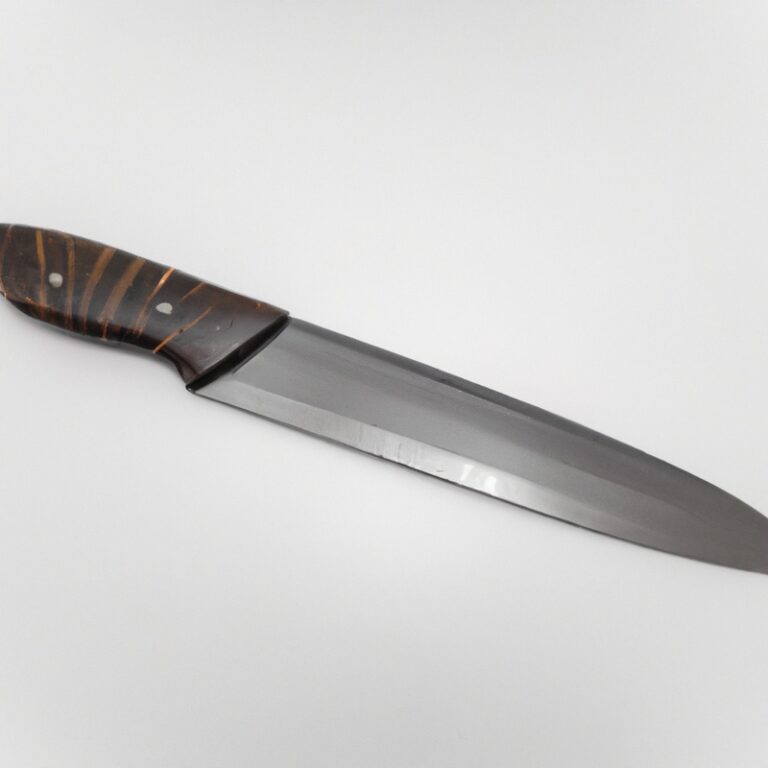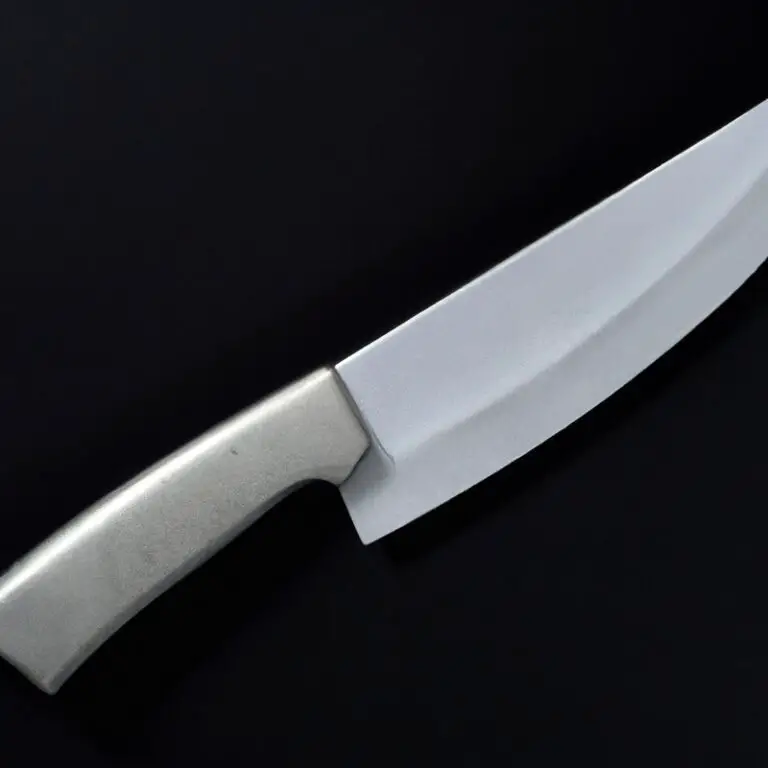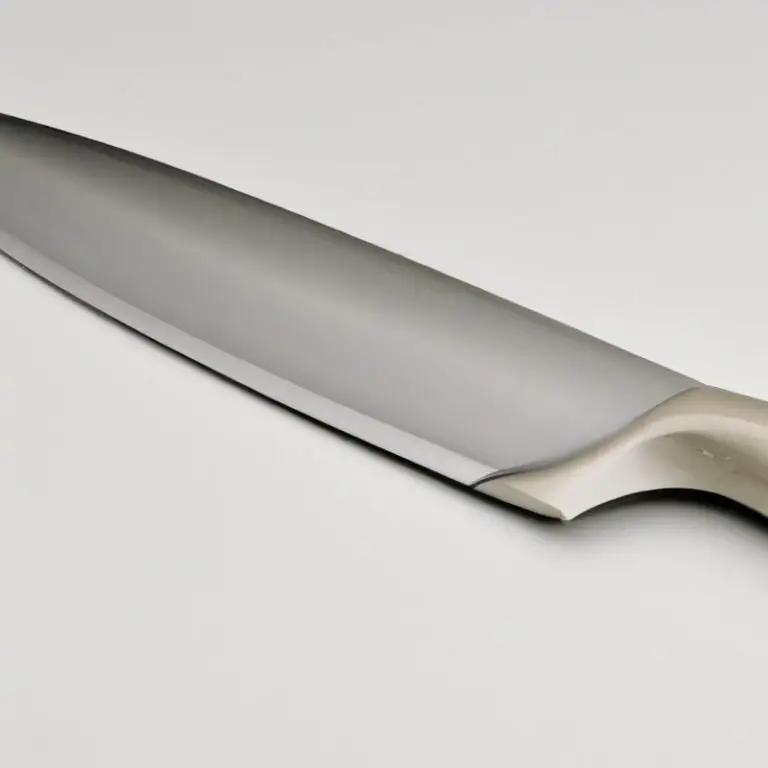What Are The Recommended Techniques For Sharpening Gyuto Knives Using Different Grits Of Whetstones? Tips
Key Takeaways:
- To sharpen Gyuto knives effectively, start with a coarse grit whetstone, then progress to medium and fine grits for a polished edge.
- A consistent angle and patience while sharpening are crucial for achieving a sharp and durable edge on your Gyuto knives.
- Avoid using electric or manual sharpeners, as they can damage the delicate edge of your Gyuto knife.
- Regular maintenance and sharpening of your Gyuto knives will prolong their lifespan and ensure optimal performance in the kitchen.
Are you tired of struggling to cut through your ingredients? A dull Gyuto knife can be frustrating and time-consuming, but fear not! Sharpening your knife using different grits of whetstones is a skill that can be easily learned.
As an experienced chef, I have sharpened countless knives and am here to share my knowledge on the recommended techniques for achieving a razor-sharp edge on your Gyuto knife.
Join me as we explore the basics of knife sharpening, the role of grits, step-by-step techniques, common mistakes to avoid, and how to choose the perfect whetstone for your Gyuto knife.
| Grit of Whetstone | Technique |
|---|---|
| 220 | Coarse grinding and initial sharpening of edges |
| 1000 | Sharpening and refining edges for general use |
| 3000-5000 | Polishing and refining edges for smoother cuts |
| 6000-8000 | Extra fine polishing for a razor-sharp edge |
Understanding the Basics of Sharpening Gyuto Knives
Understanding the basics of sharpening Gyuto knives is essential to ensure the longevity and optimum performance of the blade. Sharpening refers to the process of removing dull and damaged metal from the blade’s edge, revealing a sharp cutting surface.
It involves the use of abrasive materials like whetstones, honing steels, and sharpening rods to grind and polish the blade’s edge.
The angle of sharpening plays a significant role in determining the blade’s sharpness. A Gyuto knife typically has a primary bevel angle of around 15-20 degrees.
For sharpening, the blade’s angle needs to be maintained to ensure a consistent edge.
Sharpening a Gyuto knife on a whetstone involves holding the blade at a specific angle while sliding it through the stone’s surface, creating an even burr and polishing the edge. A proper understanding of the basics of sharpening a Gyuto knife on a whetstone involves knowing the grit sizes of the stone and their role in sharpening the blade.
The grit size refers to the coarseness of the abrasive particles on the whetstone’s surface.
In general, lower grit stones (around 120-400) are used for coarse grinding to remove the damaged metal, while higher grit stones (around 1000-8000) are used for honing and polishing the knife’s edge. Lastly, understanding the basics of sharpening a Gyuto knife involves knowing how to maintain and care for your blade to ensure its sharpness for a more extended period.
This includes regularly honing the blade with a honing steel and avoiding improper storage or use that can damage the blade’s edge.
Different Grits of Whetstones and Their Role in Knife Sharpening
Different grits of whetstones play a significant role in knife sharpening. The grit size determines the aggressiveness of the stone and the sharpness it can achieve.
The lower grit stones (500-1000 grit) are best for removing chips, repairing damages, and setting the bevel angle of the knife.
The mid-range grit stones (1000-3000 grit) are ideal for general sharpening, polishing, and honing a blade. The high grit stones (3000-8000 grit) are best for honing and refining an already sharp blade to achieve a mirror-like finish.
It is essential to use the correct grit size in each stage of sharpening to achieve the desired cutting edge.
Recommended Grit Sizes for Different Stages of Knife Sharpening
Recommended Grit Sizes for Different Stages of Knife Sharpening: The recommended grit sizes for sharpening a Gyuto knife on a whetstone vary depending on the stage of sharpening.
- Coarse Grit (120-400: Use a coarse grit to remove any chipped or damaged blade edges.
- Medium Grit (800-1000: Use a medium grit for regular sharpening and to restore the blade’s edge.
- Fine Grit (3000-6000: Use a fine grit to refine the edge and remove any scratches left by the coarse and medium grits.
Always remember to start with a lower grit and move to the higher ones until you achieve the desired sharpness. Using the right grit size for each stage can prevent damage to the blade and ensure a well-polished edge.
Preparing the Whetstone and the Knife for Sharpening
Before you begin sharpening your Gyuto knife, it is important to properly prepare the whetstone and the knife. Here are the steps to follow:
- Soak the Whetstone: Depending on the type of whetstone, it is recommended to soak it in water for 10-15 minutes before sharpening.
- Set up a Non-Slip Surface: Place a wet towel or a rubber mat under the whetstone to prevent it from sliding around.
- Check for Damage or Chips: Inspect the blade for any cracks, chips, or nicks that may need to be addressed before sharpening.
- Determine the Angle: Gyuto knives typically require a 15-20 degree angle when sharpening. Use a sharpening guide or mark the angle on the blade with a marker to ensure consistency.
- Apply Oil or Water to the Blade: Depending on the type of whetstone, apply a few drops of oil or water on the blade to reduce friction and aid in the sharpening process.
By properly preparing the whetstone and the knife, you can ensure the best possible results when sharpening your Gyuto knife.
Step-by-Step Guide to Sharpening a Gyuto Knife with a Whetstone
Step-by-Step Guide to Sharpening a Gyuto Knife with a Whetstone:
- Soak the whetstone in water for about 10 minutes before sharpening.
- Position the whetstone horizontally on a stable surface, and start with the coarse side facing up.
- With a stable hand, angle the knife at 15-20 degrees from the stone and apply continuous pressure while sliding it across the stone.
- Repeat step 3 on the other side of the blade.
- Flip the whetstone to the fine side and repeat step 3 and 4, using lighter pressure this time.
- Finally, use a honing steel to refine the edge and remove any burrs that may have been formed during sharpening process.
By following these simple steps, you can hone the blades of your Gyuto knife to perfection, allowing you to slice and dice with ease and precision.
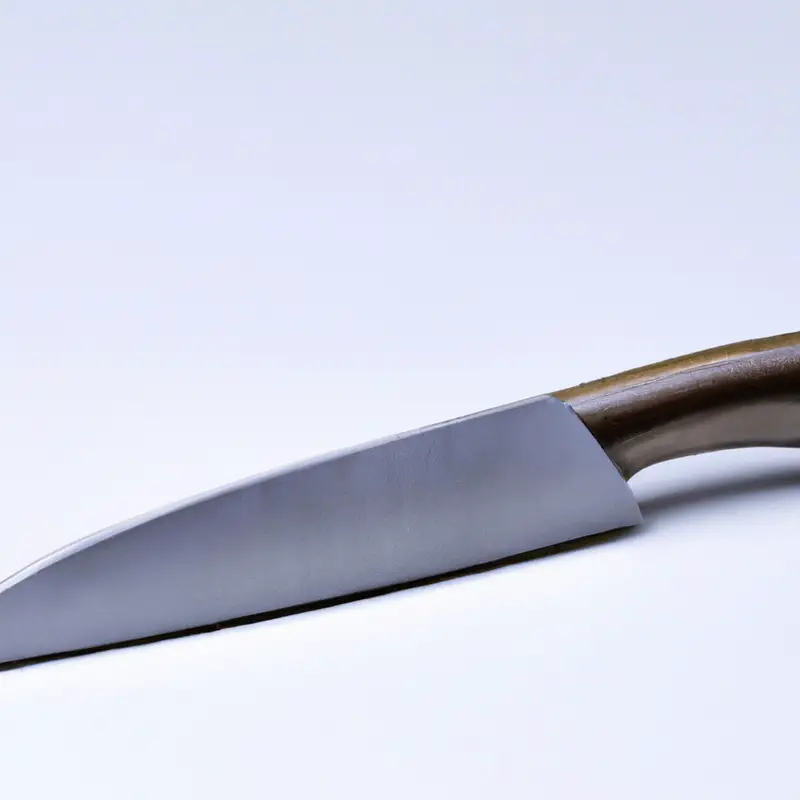
Common Mistakes to Avoid While Sharpening a Knife on a Whetstone
Common Mistakes to Avoid While Sharpening a Knife on a Whetstone:
- Using too much pressure while sharpening can cause damage to the blade and lead to an uneven edge.
- Not properly securing the knife on the whetstone can cause the blade to slip and result in injury.
- Not using the correct angle for sharpening can also lead to uneven edges and improper sharpness.
- Using a whetstone that is too coarse or too fine for the stage of sharpening can also result in poor sharpening results.
- Neglecting to properly clean and maintain the whetstone can cause buildup and decrease its effectiveness.
To avoid these mistakes, it is important to take your time, use proper technique, and choose the appropriate whetstone for each stage of sharpening. With practice and patience, you can achieve a razor-sharp edge on your Gyuto knife.
Alternative Techniques for Sharpening Gyuto Knives
Apart from using whetstones, there are alternative techniques to sharpen Gyuto knives. One option is using a honing steel.
Honing steel helps to maintain the edge of the blade, but it doesn’t sharpen the knife.
Another option is using a pull-through sharpener, which is designed to sharpen and hone the blade. However, pull-through sharpeners can cause damage to the blade if not used properly and are not recommended for Japanese knives like Gyuto.
Another alternative is using diamond sharpeners, which are effective but can be quite expensive.
Ultimately, the best technique will depend on the individual’s preference and comfort level. It’s important to research and explore different options to find the best technique that works for you and your Gyuto knife.
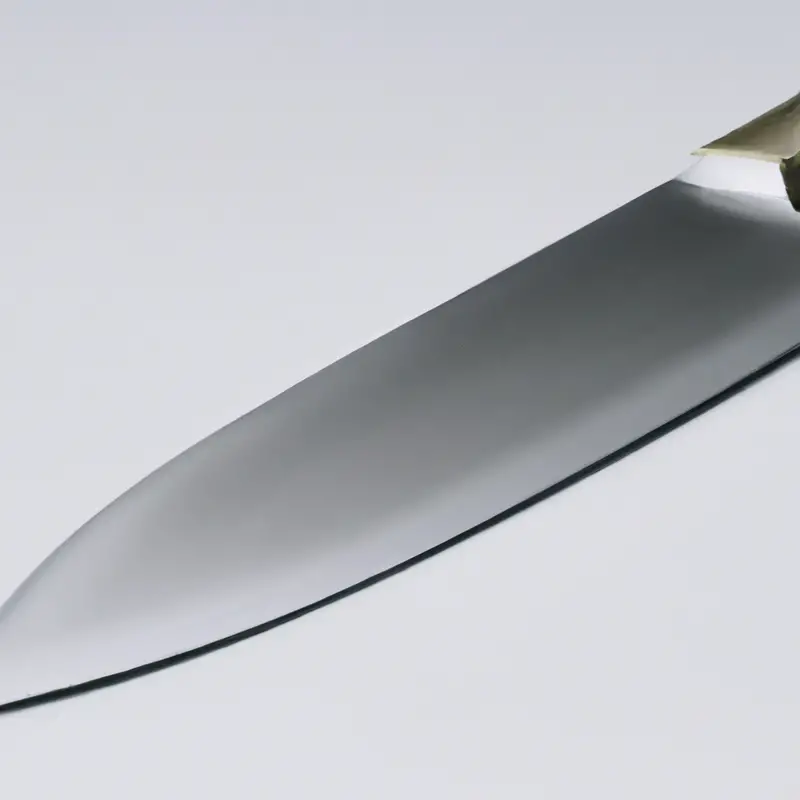
Maintenance Tips for Keeping Your Gyuto Knife Sharp
To maintain the sharpness of your Gyuto knife, it’s essential to follow some simple maintenance tips. First, make sure to keep the knife clean, dry, and free of any debris or moisture after use.
This will prevent rust and other damage to the blade.
Secondly, it’s essential to hone your knife regularly to keep the edge sharp. You can use a honing steel or a leather strop for this purpose and make sure to use light pressure.
Lastly, avoid using your Gyuto knife on hard surfaces such as glass or ceramic plates, as they can damage the blade’s edge.
Instead, use a cutting board made of wood or bamboo, which is gentle on the blade. By following these simple maintenance tips, you can ensure that your Gyuto knife remains sharp and in good condition for a long time.
Finding the Right Whetstone for Your Gyuto Knife
Finding the right whetstone for your Gyuto knife depends on the knife’s hardness and the sharpening needs. For instance, softer knives require less coarse grits (1000-2000) to avoid removing too much metal during sharpening.
On the other hand, harder knives need more coarse grits (2000-6000) to remove micro-chips and create a sharp edge.
Therefore, it is vital to get a whetstone that suits your Gyuto knife’s needs to achieve the desired sharpness and maintain the knife’s durability. When selecting a whetstone, you should consider its grit size, material, and hardness.
For instance, water stones are the most popular types of whetstones, and they come in different grit sizes, making them ideal for both coarse and fine sharpening.
Additionally, natural stone whetstones produce a sharper edge but require more maintenance and have a shorter lifespan. Finally, consider your budget since higher quality whetstones usually cost more than lower quality ones.
Final Verdict
Sharpening your Gyuto knife with a whetstone is a skill worth mastering. By understanding the different grits of whetstones and their roles in the sharpening process, you can efficiently restore your knife’s sharp edge.
Remember to carefully prepare your whetstone and knife, follow the recommended grit sizes for each stage of sharpening, and avoid common mistakes to get the best out of your knife.
With this knowledge, you can maintain your Gyuto knife’s blade and prolong its lifespan. Be sure to invest in a high-quality whetstone that suits your knife’s needs and practice regularly to perfect your technique.
With the right tools and techniques, you can achieve a razor-sharp edge every time!

